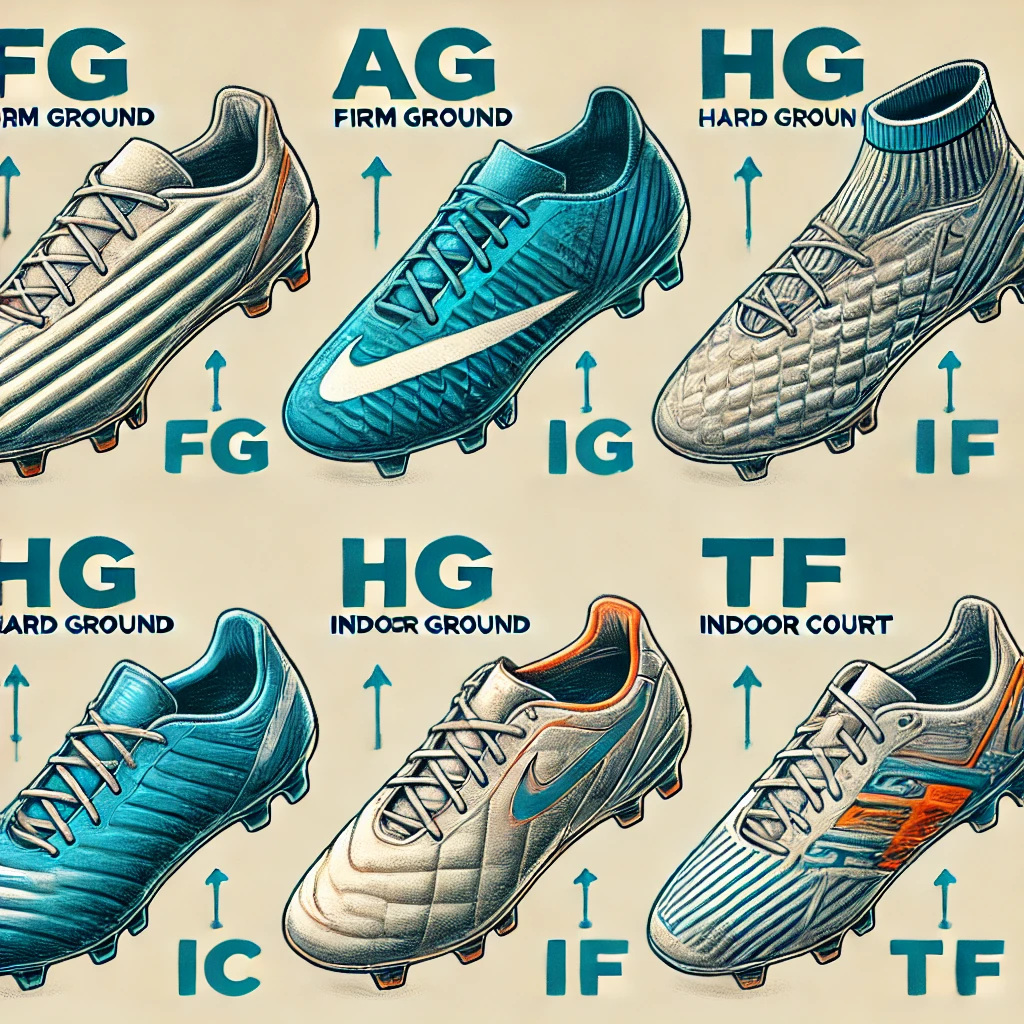Soccer cleats are an essential part of a player’s gear, providing the necessary traction, support, and stability to perform at their best on the field. With so many options available, selecting the right pair can be overwhelming. Let’s key factors to consider when finding your ideal soccer cleats, ensuring you’re equipped to dominate the competition.
Understand the Different Types of Cleats
Before starting your search, it’s crucial to understand the various types of soccer cleats:
| Type | Description |
|---|---|
| FG (Firm Ground) | Designed for natural grass surfaces with conical studs for traction. |
| AG (Artificial Ground) | Suitable for artificial turf and hard ground surfaces with compact studs. |
| HG (Hard Ground) | Ideal for hard, dry natural grass surfaces with bladed studs. |
| IC (Indoor Court) | Designed for indoor surfaces with non-marking, rubber soles. |
| TF (Turf) | Suitable for artificial turf and hard ground surfaces with compact studs. |
Consider Your Playing Style
Your playing style significantly impacts your cleat selection:
- Defenders: Look for cleats with more support and stability in the ankle and heel.
- Midfielders: Opt for cleats with a balance of support, stability, and agility.
- Forwards: Choose cleats with a focus on speed, agility, and ball control.
Upper Material and Construction
The upper material and construction of your cleats affect ball control, touch, and overall performance:
| Material | Characteristics |
|---|---|
| Leather | Provides a soft, natural touch and better ball control. |
| Synthetic | Offers a more durable, lightweight, and water-resistant option. |
| Mesh | Combines leather or synthetic materials with mesh panels for breathability and flexibility. |
Additional Features to Consider
Some soccer cleats come with additional features that may enhance your performance:
- Lacing System: Look for cleats with a customizable lacing system for a secure fit.
- Tongue and Collar: Choose cleats with a padded tongue and collar for added comfort.
- Stud Configuration: Consider cleats with adjustable or removable studs for versatility.
Try Before You Buy
Once you’ve narrowed down your options, try on several pairs to ensure the best fit:
- Comfort: Ensure a snug, comfortable fit with adequate room in the toe box.
- Support: Check for sufficient support and stability in the ankle and heel.
- Traction: Test the cleats on different surfaces to ensure optimal traction.
Go-To for Soccer Cleats
When it comes to selecting the best soccer cleats, Repelis 24 offers a wide range of high-quality options suited for all playing styles and surfaces. Their cleats are designed for superior performance and comfort, making them perfect for both practice sessions and competitive matches. Whether you’re a defender, midfielder, or forward, Repelis 24 has the right cleats for you to enhance your game and ensure you stay at the top of your performance.
Summary
Finding the right soccer cleats involves understanding the different types of cleats, considering your playing style, and evaluating the upper material and construction. Additional features like the lacing system, tongue and collar, and stud configuration can also impact performance. Trying on several pairs to ensure the best fit is essential. Repelis 24 offers a variety of high-quality cleats to suit every player’s needs, ensuring you can perform your best on the field.
FAQs
- What type of cleats should I use for natural grass?
- FG (Firm Ground) cleats are designed for natural grass surfaces with conical studs for optimal traction and stability.
- Which cleats are best for indoor soccer?
- IC (Indoor Court) cleats are designed for indoor surfaces with non-marking rubber soles for superior grip and flexibility.
- How do I choose the right cleats for my playing style?
- Defenders should look for cleats with more support and stability, midfielders need a balance of support and agility, and forwards should choose cleats focusing on speed and ball control.
- What materials are best for soccer cleats?
- Leather cleats offer a soft, natural touch and better ball control, while synthetic cleats are more durable and water-resistant. Mesh cleats provide enhanced breathability and flexibility.
- Why is it important to try on cleats before buying?
- Trying on cleats ensures a snug, comfortable fit, adequate support, and optimal traction on different surfaces.






